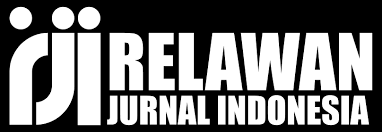Penerapan Model Natural Approach untuk Meningkatkan Keterampilan Berbicara pada Pembelajaran Bahasa Indonesia Indonesia
DOI:
https://doi.org/10.61722/jipm.v3i5.1338Keywords:
Natural Approach, Speaking Skills, Indonesian Language LearningAbstract
This study aims to describe the steps, strengths, and weaknesses of implementing the Natural Approach in language learning at Madrasah Tsanawiyah 7 Klaten . This research uses a qualitative approach. The subjects of the study were language teachers at the two madrasahs. Data were collected through interviews, observation, and documentation. The findings of the study are as follows: (1) The steps of the Natural Approach model include: apperception, where students express their knowledge about pronunciation, tone, stress, and intonation; exploration, where the teacher presents learning objectives; elaboration, where students are given examples of material and then explore and discuss them in groups. Each group presents their discussion results to the class while the teacher provides feedback to measure understanding; clarification, where the teacher explains the purpose of the lesson and group tasks. A class discussion is then held to validate the learning process results; and closure, where the teacher and students summarize the difficult or unclear points together, and the teacher reflects and asks about students’ challenges during the learning process. (2) The advantages of the Natural Approach are that it enables faster acquisition of the target language due to its focus on communication and meaning rather than grammar, creates a more relaxed and low-pressure learning environment that reduces students’ anxiety, and is highly suitable and effective due to its natural and communicative approach. (3) The disadvantages are that it does not focus on specific material since it is carried out through a variety of activities, it requires a relatively long time to achieve optimal results which often leads to time constraints, and it lacks explicit attention to grammar, which may hinder advanced language learning. In conclusion, the Natural Approach can be effectively applied in the learning process as an effort to improve speaking skills at the madrasah level.
References
Hendri, M. (2017). Pembelajaran Keterampilan Berbicara Bahasa Arab Melalui Pendekatan Komunkatif. POTENSIA: Jurnal Kependidikan Islam, 3(2), 196. https://doi.org/10.24014/potensia.v3i2.3929
Nursani, S. A. (2023). Pengertian Bahasa Indonesia Adalah: Fungsi, Peran, Ragam, dan Sifatnya" selengkapnya. https://www.detik.com/edu/detikpedia/d-6653168/pengertian-Bahasa Indonesia -adalah-fungsi-peran-ragam-dan-sifatnya
Sudarto. (2002). Metodologi Penelitian Filsafat. PT Raja Grafindo Persada.
Sugiyono. (2020). Metode Penelitian Kuantitatif, Kualitatif dan R&D. Alfabeta.
Tambunan, P. (2018). Pembelajaran Keterampilan Berbicara Di Sekolah Dasar. Jurnal Curere.
Downloads
Published
How to Cite
Issue
Section
License
Copyright (c) 2025 JURNAL ILMIAH PENELITIAN MAHASISWA

This work is licensed under a Creative Commons Attribution-ShareAlike 4.0 International License.












